Recent Articles
Popular Makes
Body Types
2019 Chevrolet Camaro Road Test and Review
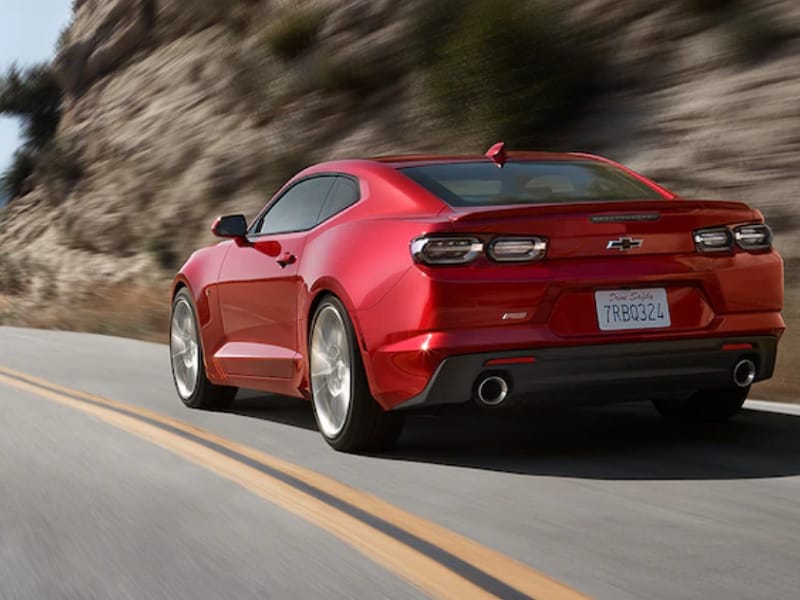
2019 Chevrolet Camaro RS Red Driving Rear Three Quarter ・ Photo by Chevrolet
Now in its sixth generation, the Chevrolet Camaro continues to offer exhilarating performance and alluring design at an affordable price. It’s a legacy that dates back to the very first Camaro introduced in 1967 and a combination has made Chevy’s venerable version of the American muscle car an icon of style and speed.
Over the last 53 years, Chevrolet has sold millions of Camaros, and many have become coveted collector's items. From the big-blocks and Z28s of the 1960s to the IROC Z of the big-hair '80s, the list of legendary high-performance Camaros is long. But time and technology march on, and the 2019 Camaro is the most powerful, the most comfortable, the safest, and best-performing Camaro of all time. Still, some things never change, and the muscle car continues to compete with its longtime rivals: the Ford Mustang and the Dodge Challenger.
Pricing starts under $26,000.
The 2019 Chevrolet Camaro is offered in LS, LT, SS, and ZL1 models. Each is available as a coupe, while the LT, SS, and ZL1 are also offered as a soft-top convertible. The base LS coupe starts at $25,995, including a $995 destination charge, although the LT coupe costs just $500 more and adds a few worthwhile upgrades. Both get 18-inch wheels, power-adjustable front seats, a rearview camera, and LED headlights. Convertible models cost an additional $6,500 and come with a power-operated roof that retracts in seconds.
All Camaros are rear-wheel drive. Standard power on the LS and LT comes from a turbocharged 2.0-liter four-cylinder engine that makes an impressive 275 hp and 295 lb-ft of torque. Over at Ford, a base Mustang packs 310 hp, which is significantly more than the Camaro for just a few hundred dollars more than a Camaro LS. If you need more muscle, a 335-hp 3.6-liter V6 is available on the LS — and we recommend the upgrade. All models also come with a standard six-speed manual transmission, but automatic transmissions are available across the range.

Photo by Chevrolet
Stepping Up to the V8s
Buyers looking for even more power and performance should step up to the V8-powered Camaro SS, which shares its 6.2-liter engine with the Chevrolet Corvette. Its 455 hp and 455 lb-ft of torque make the Camaro one of the quickest cars on the road, and it’s a strong performance value at $37,995, although a 460-hp 5.0-liter V8 Mustang GT costs about $1,500 less. SS models also get a more aggressive front end with a larger blacked-out grille and a scooped hood, 20-inch wheels, and Brembo performance brakes. V8 Camaros also get an enhanced version of Driver Selector Mode, which allows you to tune the car’s performance for various driving conditions, including the racetrack.
Our test vehicle, a 650-hp Camaro ZL1, is the fastest and most powerful Camaro of all time. It’s powered by a supercharged 6.2-liter V8 and is available with a standard six-speed manual or an all-new and very impressive 10-speed automatic transmission. ZL1 prices start at $64,695.
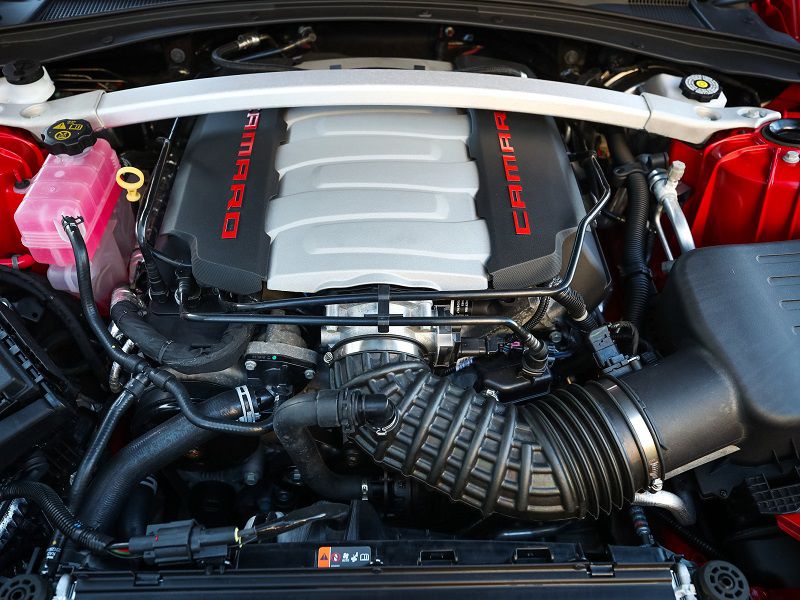
Photo by Chevrolet
Incredible Speed and Power
Speed and power have always been part of the Camaro's appeal, and every 2019 Camaro has enough muscle to push you back in the seat and keep you there. These modern-day muscle cars are fun to drive. With 275 hp, the turbocharged four-cylinder models can accelerate from 0 to 60 mph in about 5 seconds and through the quarter mile in 13.8 seconds at 100 mph. That makes it one of the quickest Camaros ever, even outrunning many of the legendary V8 models from the 1960s. The V8-powered 2019 Camaro SS easily smokes its ancestors, sprinting to 60 mph in just about 4 seconds flat and through the quarter mile in 12.5 seconds.
But the Camaro’s king of speed is the supercharged ZL1, which is capable of accelerating from 0 to 60 mph in 3.5 seconds, finishing the quarter mile in just over 11 seconds, and reaching a top speed over 200 mph. That’s some serious thrust, and it made our ZL1 convertible test vehicle an addictive thrill ride. Even part throttle spins its huge back tires, causing passengers to wheeze with fear.
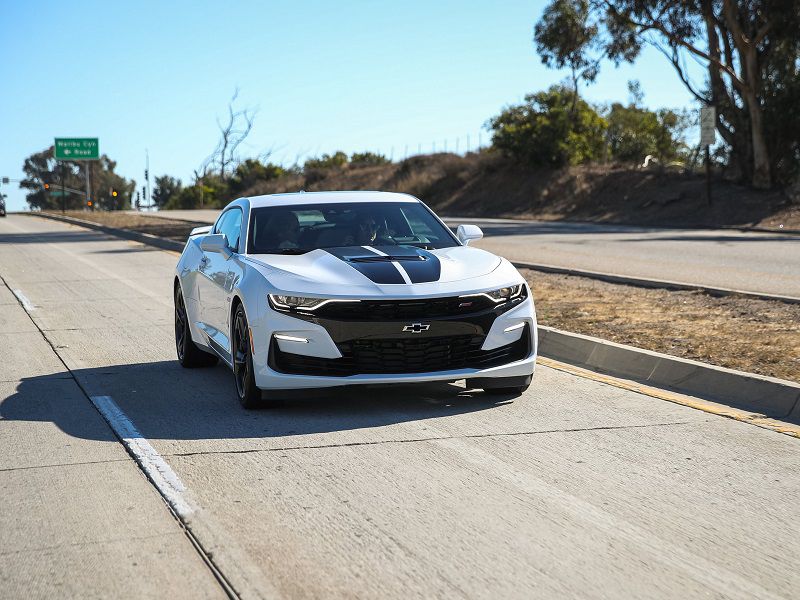
Photo by Chevrolet
Awesome Handling
Unlike some Camaros from decades gone by, today’s Camaro isn’t just fast in a straight line; it also offers world-class handling, especially on the SS and ZL1 models with their more aggressive tires and suspensions. All 2019 Camaros are well balanced with quick steering that provides proper feel and powerful four-wheel disc brakes. Buyers of the turbocharged models looking for more agility can add the 1LE Package, which improves the Camaros handling with larger-diameter front and rear stabilizer bars, specifically tuned shocks, staggered 20-inch wheels and tires, and other enhancements.
Tuned on Germany’s Nurburgring, the most dangerous racetrack in the world, the Camaro ZL1 takes those abilities to the next level. With its specially calibrated Magnetic Ride suspension, an electronic limited-slip differential and Goodyear Eagle F1 Supercar tires, our ZL1 test car was composed in high-speed corners and incredibly capable and fun to drive both in the city and on a deserted mountain road. We were also impressed by the Camaro’s stiff structure and the performance of its massive Brembo brakes.
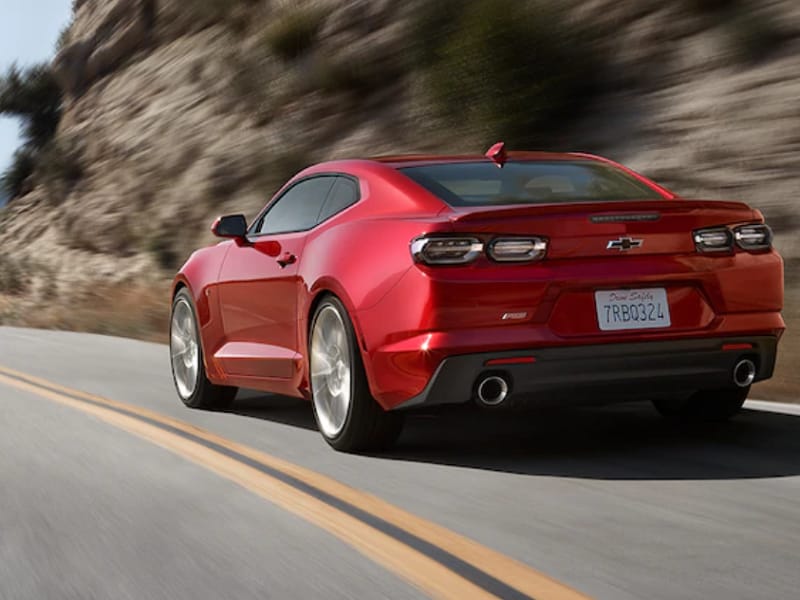
Photo by Chevrolet
Surprising Fuel Economy
The 2019 Chevrolet Camaro is also surprisingly fuel-efficient considering its high levels of horsepower. And its economy numbers are competitive for its class. Turbocharged four-cylinder models are rated by the EPA at 20 mpg in the city and 30 mpg on the highway with the manual transmission, and 1 mpg better with the available automatic. With the more powerful 3.6-liter V6 and the automatic, the Camaro achieves 19 mpg city and 28 mpg highway.
SS models with the V8 are a bit more thirsty. With the new 10-speed automatic, they’re rated at 16 mpg city and 27 mpg highway, or 16 mpg city and 24 mpg highway with the manual. Still, not bad. But the top-dog 650-hp ZL1 has a bit of a drinking problem, and it’s the only Camaro subject to a $2,100 gas guzzler tax. Our ZL1 with the optional 10-speed automatic, which costs an additional $1,595, is rated 13 mpg city and 21 mpg highway. We averaged just 15 mph during a week of mixed driving.

Photo by Chevrolet
Easy and Comfortable to Drive
The days of crude, uncomfortable Camaros are also history. Today’s Camaro is pleasant to be in with a firm but smooth ride and a high-quality, well-appointed interior. A tilt and telescopic steering wheel is standard and seat comfort is exceptional. The Recaro Performance front bucket seats in our $72,585 ZL1 convertible were heavily bolstered for hard driving, but they weren’t too hard or narrow on our daily commute. All the Camaro’s controls are well-placed, and its infotainment system has an available large 8-inch touchscreen with sharp graphics. The system is compatible with Apple CarPlay and Android Auto, and all Camaros come standard with 4G Wi-Fi connectivity and Bluetooth.
We do have a few minor complaints. The Camaro’s round air conditioning vents look cool, but they’re mounted low on the dash, which keeps them from getting air up to your face. Also, the rear seat is tight, even for average-height adults, and visibility can be a challenge because of the cars low roofline and thick pillars.
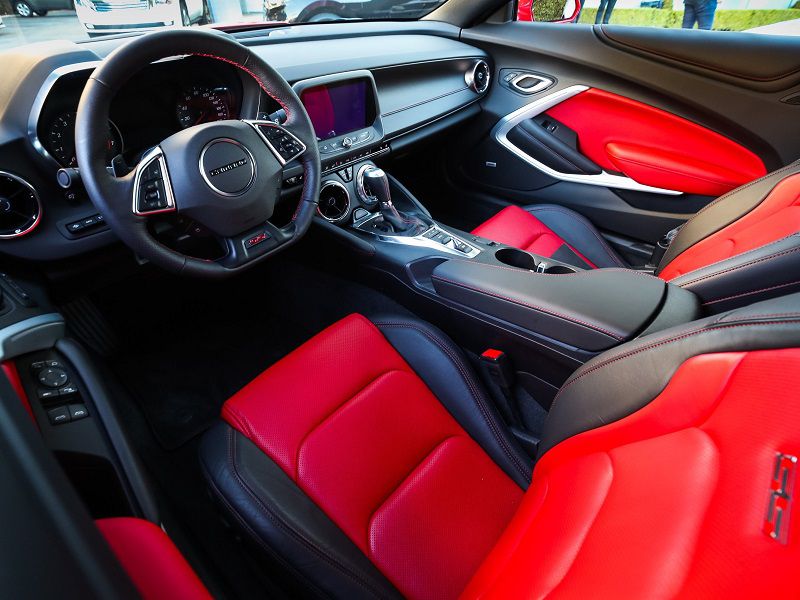
Photo by Chevrolet
Impressive Safety But a Small Trunk
Every Camaro gets Chevy’s configurable Teen Driver system, a feature we’ve praised in some of GM’s other models. It can prevent young drivers from turning off some of the Camaro’s safety systems, and an in-vehicle report allows parents to monitor their teen’s driving habits. Other available safety features include rear parking sensors, blind-spot monitoring with a rear cross-traffic alert, and a forward collision alert. The National Highway Traffic Safety Administration has awarded the 2019 Chevrolet Camaro its highest possible safety rating of five stars.
A folding rear seat for additional cargo volume is also standard on Camaro coupes. That’s a good thing since the Camaro’s trunk opening is very small and its cargo space measures just 9.1 cubic feet. It’s even smaller on convertible models. The Mustang and Challenger both have larger trunks.
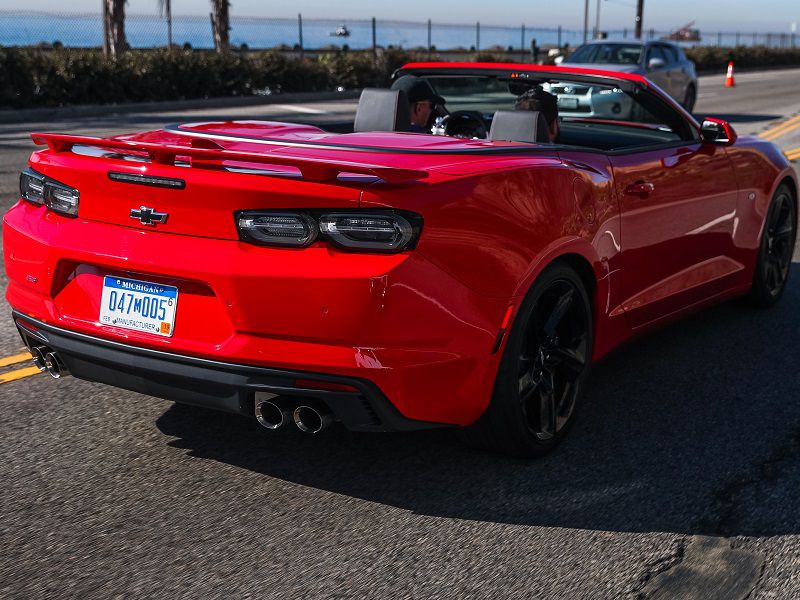
Photo by Chevrolet
New Styling for 2019
This year, Chevrolet has given the Camaro a bit of a facelift that has nicely modernized the muscle car’s look. LS and LT models get new dual-element headlamps, LED lighting, and a reshaped hood, while the SS has a new extractor-style hood, a more radical grille, aero-enhancing air curtains, and a new rear fascia and sculpted LED taillamps with clear lenses.
With its aggressive wide stance and long hood/short deck proportions, the Chevy’s design still borrows from Camaros of the past, especially the ever-popular 1969 model, but it isn’t too old-school. And it’s a head-turner, especially our Garnet Red ZL1 convertible, with its large black grille, bulging hood, and large rear spoiler.
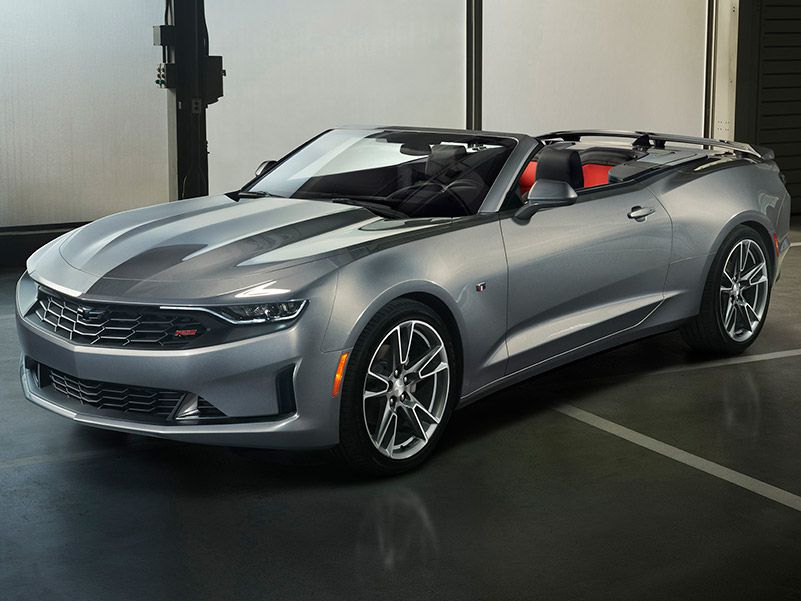
Photo by Chevrolet
Final Thoughts
Although the Camaros four-cylinder models pack enough power for most buyers, we recommend stepping up to the more powerful 3.6-liter V6 if you can. You’ll appreciate the additional performance and other desirable equipment over time, and the small sacrifice in fuel economy is worth it.
However, you only live once, and some say you haven’t lived at all until you've driven a V8-powered Camaro. The 2019 Camaro SS and the supercharged ZL1 aren’t just cars — they’re the kinds of cars you tell your grandkids about. They’re more than modes of transportation. More than material things. They’re an experience. If you’re in the market for a sexy performance coupe or convertible, the 2019 Chevrolet Camaro is a very desirable choice.
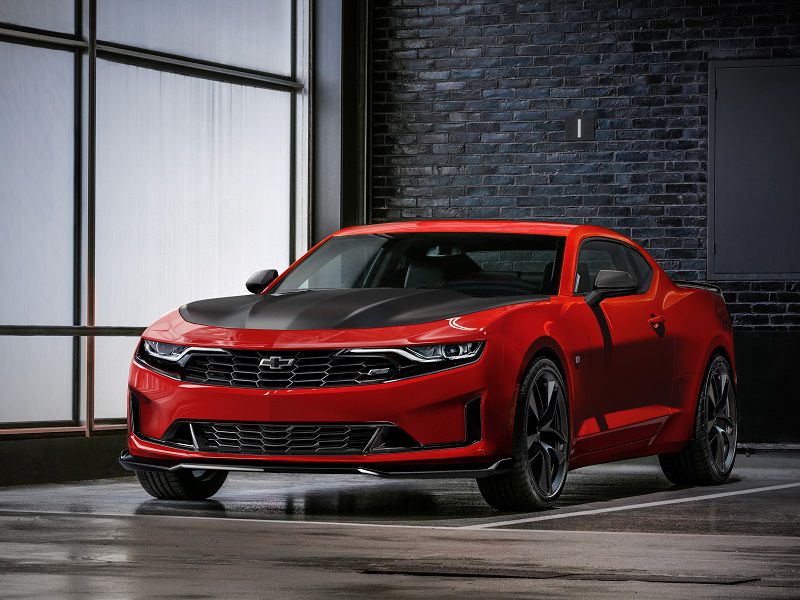
Photo by General Motors